Kia Niro vs Mazda 2 Hybrid – Differences & prices compared
Compare performance, boot space, consumption and price in one view.
Find out now: which car is the better choice for you – Kia Niro or Mazda 2 Hybrid?
The Kia Niro (SUV) comes with a Full Hybrid or Plugin Hybrid engine and Automatic transmission. In comparison, the Mazda 2 Hybrid (Hatchback) features a Full Hybrid engine with Automatic transmission.
When it comes to boot capacity, the Kia Niro offers 451 L, while the Mazda 2 Hybrid provides 286 L – depending on how much space you need. If you’re looking for more power, decide whether the 180 HP of the Kia Niro or the 116 HP of the Mazda 2 Hybrid suits your needs better.
In terms of consumption, the values are 2.40 L per 100 km for the Kia Niro, and 3.80 L for the Mazda 2 Hybrid.
Price-wise, the Kia Niro starts at 29100 £, while the Mazda 2 Hybrid is available from 21400 £. Compare all the details and find out which model fits your lifestyle best!
Kia Niro
The Kia Niro presents itself as a versatile and eco-friendly SUV, blending a stylish design with advanced hybrid technology. Its spacious interior offers comfort and practicality, making it ideal for both city driving and longer journeys. With a focus on efficiency and sustainability, the Niro is a compelling choice for environmentally conscious drivers.
details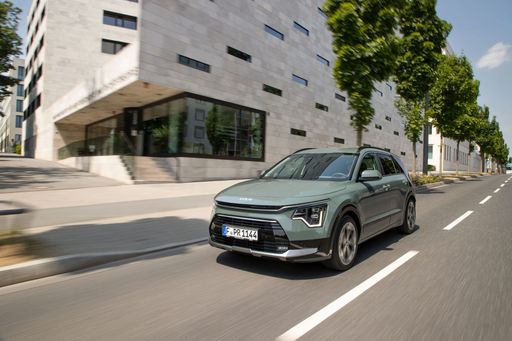 @ press.kia.com
@ press.kia.com
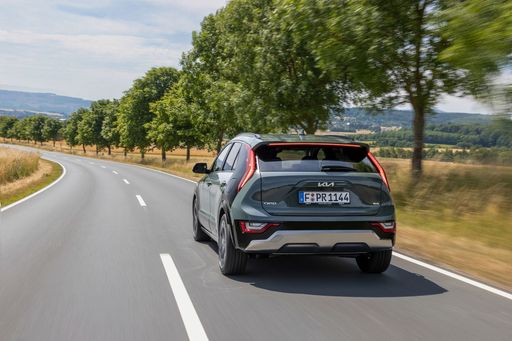 @ press.kia.com
@ press.kia.com
 @ press.kia.com
@ press.kia.com
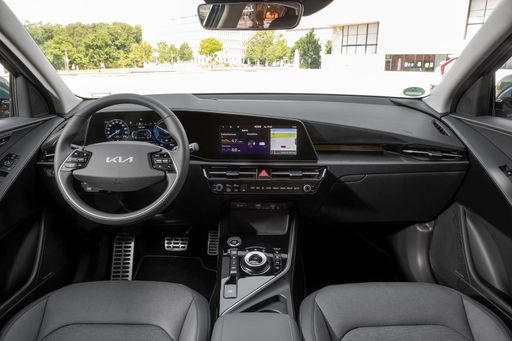 @ press.kia.com
@ press.kia.com
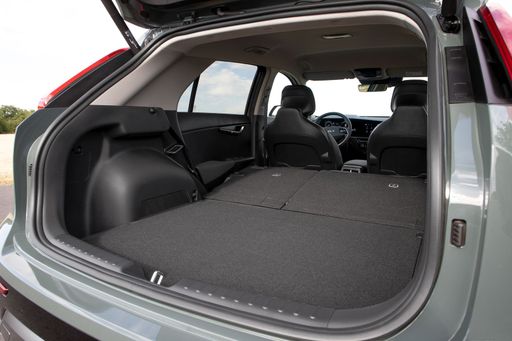 @ press.kia.com
@ press.kia.com
Mazda 2 Hybrid
The Mazda 2 Hybrid impresses with its sleek design and advanced hybrid technology, making it a strong contender in the compact car category. It offers a refined driving experience with smooth transitions between electric and petrol power, ensuring both efficiency and performance. Inside, the cabin is thoughtfully designed, providing comfort and intuitive controls for a modern driving experience.
details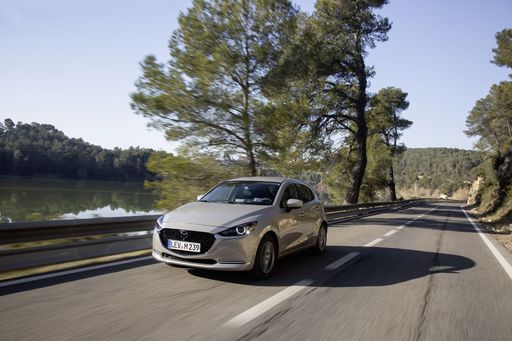 @ de.mazda-press.com
@ de.mazda-press.com
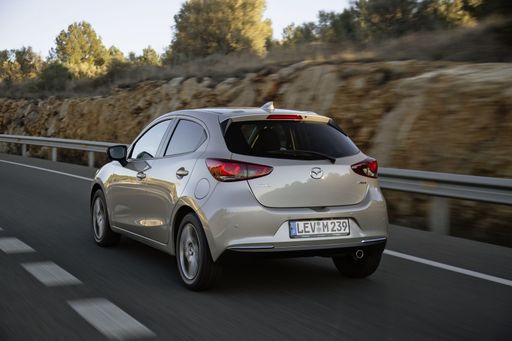 @ de.mazda-press.com
@ de.mazda-press.com
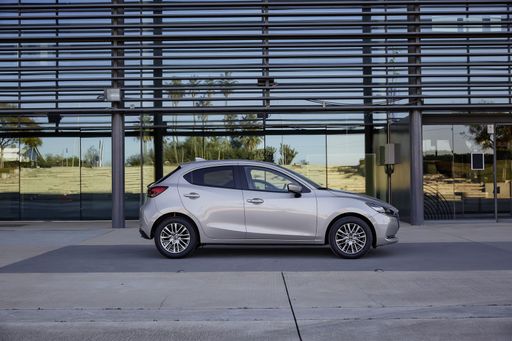 @ de.mazda-press.com
@ de.mazda-press.com
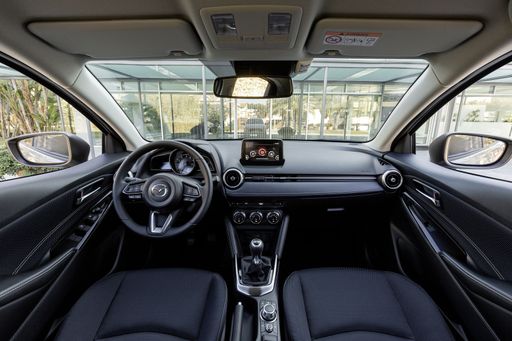 @ de.mazda-press.com
@ de.mazda-press.com
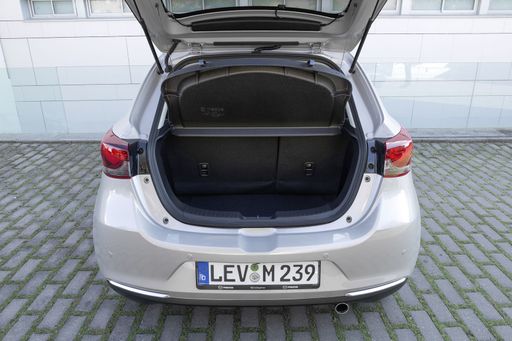 @ de.mazda-press.com
@ de.mazda-press.com

|

|
|
|
|
Costs and Consumption |
|
|---|---|
|
Price
29100 - 38600 £
|
Price
21400 - 28200 £
|
|
Consumption L/100km
2.4 - 4.9 L
|
Consumption L/100km
3.8 - 4 L
|
|
Consumption kWh/100km
-
|
Consumption kWh/100km
-
|
|
Electric Range
57 - 62 km
|
Electric Range
-
|
|
Battery Capacity
1.3 - 11.1 kWh
|
Battery Capacity
-
|
|
co2
53 - 111 g/km
|
co2
87 - 93 g/km
|
|
Fuel tank capacity
37 - 42 L
|
Fuel tank capacity
36 L
|
Dimensions and Body |
|
|---|---|
|
Body Type
SUV
|
Body Type
Hatchback
|
|
Seats
5
|
Seats
5
|
|
Doors
5
|
Doors
5
|
|
Curb weight
1474 - 1594 kg
|
Curb weight
1180 kg
|
|
Trunk capacity
348 - 451 L
|
Trunk capacity
286 L
|
|
Length
4420 mm
|
Length
3940 mm
|
|
Width
1825 mm
|
Width
1745 mm
|
|
Height
1545 mm
|
Height
1505 mm
|
|
Payload
466 kg
|
Payload
435 kg
|
Engine and Performance |
|
|---|---|
|
Engine Type
Full Hybrid, Plugin Hybrid
|
Engine Type
Full Hybrid
|
|
Transmission
Automatic
|
Transmission
Automatic
|
|
Transmission Detail
Dual-Clutch Automatic
|
Transmission Detail
CVT
|
|
Drive Type
Front-Wheel Drive
|
Drive Type
Front-Wheel Drive
|
|
Power HP
138 - 180 HP
|
Power HP
116 HP
|
|
Acceleration 0-100km/h
9.9 - 11.4 s
|
Acceleration 0-100km/h
9.70 s
|
|
Max Speed
170 - 185 km/h
|
Max Speed
175 km/h
|
|
Torque
265 Nm
|
Torque
-
|
|
Number of Cylinders
4
|
Number of Cylinders
3
|
|
Power kW
102 - 132 kW
|
Power kW
85 kW
|
|
Engine capacity
1580 cm3
|
Engine capacity
1490 cm3
|
General |
|
|---|---|
|
Model Year
2025
|
Model Year
2025
|
|
CO2 Efficiency Class
C, B
|
CO2 Efficiency Class
B
|
|
Brand
Kia
|
Brand
Mazda
|
Kia Niro
The Evolution of the Kia Niro: A Glimpse into the Future
The Kia Niro has become a symbol of innovation in the hybrid and electric vehicle market. This compact SUV offers a unique blend of efficiency, performance, and style, appealing to a wide range of drivers. Kia Niro's latest model lineup showcases different powertrains, offering consumers choices between full hybrid, plug-in hybrid, and full electric options. These advancements represent Kia's commitment to sustainable mobility and cutting-edge technology.
Performance and Efficiency: Behind the Wheel of the Kia Niro
The performance range of the Kia Niro is impressive, with power outputs ranging from 129 PS in the full hybrid variant to 204 PS in the completely electric version. This ensures that there’s a Niro to meet diverse driving needs and preferences. The acceleration from 0-100 km/h spans between 7.8 to 11.3 seconds across different models, showcasing a balance between efficiency and responsiveness.
Fuel and energy consumption figures are equally commendable. With the hybrid models consuming between 0.8 to 4.4 litres per 100 km and the electric model utilising 16.2 kWh per 100 km, the Kia Niro caters to eco-conscious consumers. Notably, the plug-in hybrid version offers a remarkable electric range of up to 65 km, while the fully electric model boasts an impressive range of 460 km on a single charge.
Innovative Features for Today’s Driver
Kia has equipped the Niro with state-of-the-art features aimed at enhancing the driving experience. The latest models come with advanced driver assistance systems, ensuring safety and convenience. These include lane-keeping assist, adaptive cruise control, and collision avoidance technologies that set a high standard in the compact SUV class.
The Niro also benefits from a sleek infotainment system featuring a high-resolution display, offering seamless connectivity with features like Apple CarPlay and Android Auto. This keeps drivers connected while minimising distractions, creating an optimal driving environment.
Design and Practicality: A Perfect Balance
The Kia Niro stands out with its aerodynamic design, which is both aesthetically pleasing and practical. The dimensions of the vehicle – 4420 mm in length, 1825 mm in width, and a height ranging from 1545 to 1570 mm – provide ample space for passengers and cargo. The boot capacity ranges from 348 to 475 litres, catering to those who require versatility for their lifestyle or family needs.
The Niro’s cabin is crafted with a focus on comfort and usability, incorporating high-quality materials and an intelligent layout that complements its sophisticated exterior.
Sustainability and Cost Efficiency
The Kia Niro reflects Kia's dedication to improving environmental performance. The CO2 emissions spectrum, ranging from 0 to 100 g/km depending on the powertrain, highlights the vehicle's eco-friendly credentials. For those particularly conscious of their environmental footprint, the electric and plug-in hybrid models offer substantial reductions in emissions.
In terms of cost, the Niro offers competitive pricing from €32,790 to €47,590, and operational costs ranging from €928 to €1,101 per month. The Niro also maintains a reasonable cost per kilometre, between 37.1 to 44.1 cents, making it an economically sound choice in the long run.
Conclusion: The Future is Bright for Kia Niro
The Kia Niro stands as a testament to Kia’s innovative spirit and commitment to providing eco-friendly and technologically advanced vehicles. Its blend of performance, efficiency, and innovative features make it a compelling option for those seeking a future-focused SUV. As Kia continues to evolve, the Niro remains a leading example of how the brand is shaping the future of driving.
Mazda 2 Hybrid
The All-New Mazda 2 Hybrid: A Leap into the Future of Urban Driving
The 2024 Mazda 2 Hybrid is a testament to Mazda’s commitment to blending innovation and efficiency in a compact package, perfect for urban driving. This hybrid marvel harmoniously balances performance, style, and cutting-edge technology.
Engineered Excellence: Power and Performance
Under the bonnet, the Mazda 2 Hybrid is powered by a full-hybrid system. This sophisticated mechanism combines a combustion engine with electric power, generating a robust 116 PS (or 85 kW). With a responsive acceleration of 0-100 km/h in just 9.7 seconds, this car ensures a dynamic driving experience without compromising fuel efficiency.
Efficiency and Environmental Responsibility
The Mazda 2 Hybrid shines in fuel economy with a noteworthy consumption range of 3.8 to 4 L/100 km. Not only does it offer outstanding efficiency for budget-conscious drivers, but it also projects a responsible attitude towards the environment. With CO2 emissions ranging from 87 to 93 g/km, it holds a respectable B efficiency rating, making it an attractive option for eco-friendly car enthusiasts.
Design and Dimensions: The Compact Urban Companion
With its hatchback design, the Mazda 2 Hybrid embraces both style and practicality. Its compact dimensions—3940 mm in length, 1745 mm in width, and 1505 mm in height—make it ideal for navigating through tight city streets. Despite its size, the Mazda 2 Hybrid offers a comfortable and spacious interior for up to five passengers, complemented by a generous boot capacity of 286 litres.
Technology and Comfort: Innovative Features
The Mazda 2 Hybrid is equipped with a CVT (Continuously Variable Transmission) that offers a seamless driving experience. Advanced features like state-of-the-art infotainment systems and connectivity options ensure both driver and passengers enjoy a connected journey. The model is available in several trim levels, including Centre-Line CVT, Exclusive-Line CVT, Homura CVT, Homura Plus CVT, and Prime-Line CVT, each offering unique features to tailor to various preferences.
Safety and Assurance
In addition to comfort and performance, the Mazda 2 Hybrid prioritises safety. Its robust structure and advanced safety systems deliver peace of mind while traversing urban landscapes. Mazda’s focus on safety innovation ensures each journey is as secure as it is enjoyable.
A Smart Investment: Pricing and Running Costs
With a starting price ranging from €24,990 to €32,890, the Mazda 2 Hybrid positions itself as an attractive choice for those seeking cutting-edge hybrid technology without breaking the bank. Its running costs, including a monthly expenditure between €723 and €855 and a cost per kilometre ranging from 28.9 to 34.2 cents, underscore its economic benefit over time.
Conclusion: The New Benchmark for Urban Hybrids
The Mazda 2 Hybrid represents a harmonious amalgamation of efficiency, innovation, and practicality, tailored for the modern urbanite. As cities continue to evolve, the need for sustainable and versatile transport solutions becomes paramount, and the Mazda 2 Hybrid meets these needs with aplomb, setting a new benchmark for hybrids in its class.
Which drive types are available for the Kia Niro?
Available as Front-Wheel Drive.
The prices and data displayed are estimates based on German list prices and may vary by country. This information is not legally binding.
